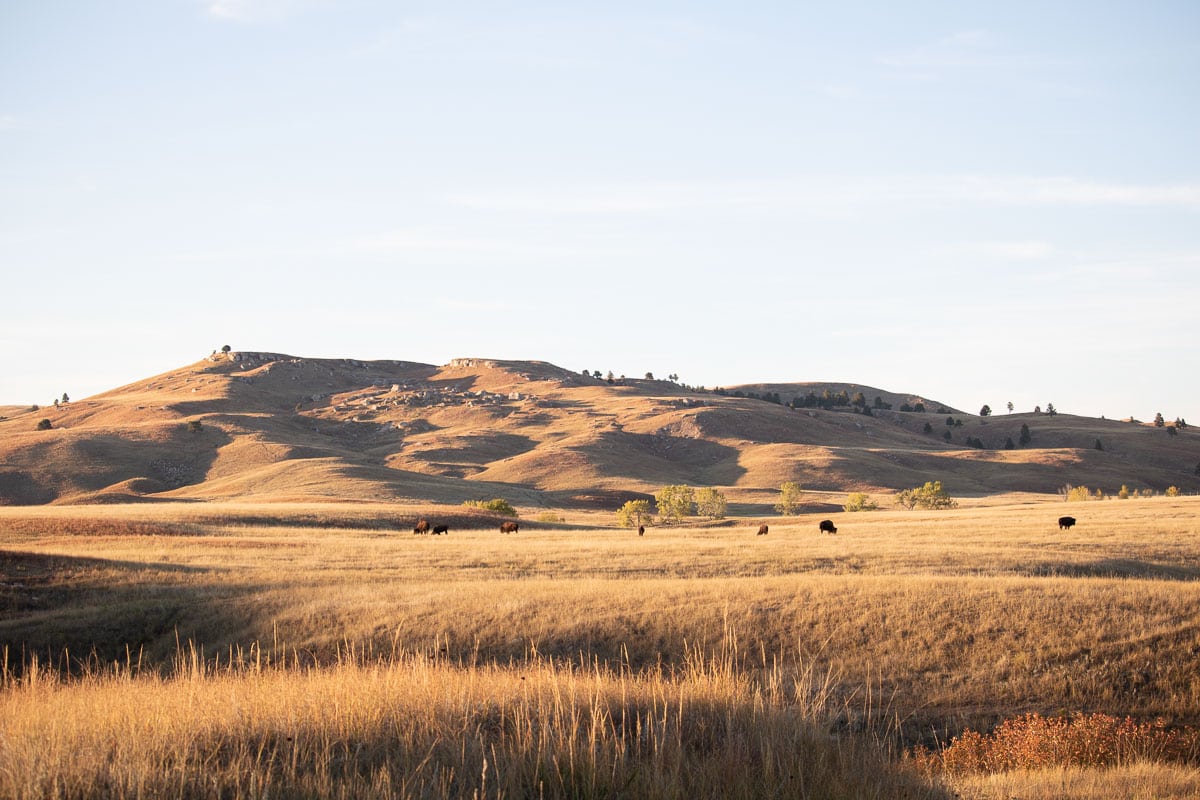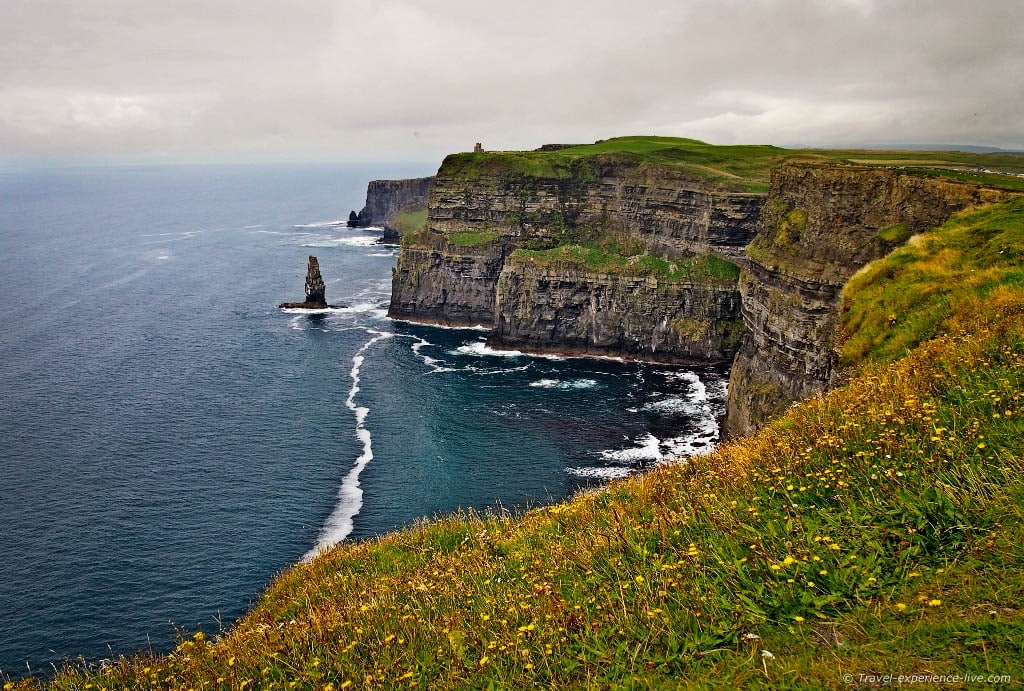11 Essential Things to Do in Wind Cave National Park
Established in 1903 by the conservationist President Theodore Roosevelt, Wind Cave National Park is one of the oldest national parks in America. It is also the very first national park in the world that was created to protect a subterranean landscape.
With more than 150 miles, and counting, of explored passageways, Wind Cave is one of the longest known caves on Earth.
It is home to intricate cave formations, such as delicate frostwork, cave “popcorn” and, its main claim to fame, huge collections of boxwork—95% of boxwork in the world is found in Wind Cave.
Besides its exceptional length and rare boxwork, Wind Cave is also notable for its namesake feature. Due to barometric pressure changes in the cave, it “breathes.” As the air pressure changes, gusts of wind blow in and out of the cave.
The Lakota consider this to be a sacred place, Wind Cave being the site where they first emerged from the underworld.
As fascinating as the underground world of Wind Cave National Park is, the aboveground landscapes are quite remarkable as well. Located in the Black Hills of South Dakota, it sits at the meeting point of the mixed-grass prairie of the Great Plains and the ponderosa pine forests of the West.

Wildlife thrives here, including prairie dogs, pronghorn, elk, mule deer, coyotes, rattlesnakes, burrowing owls, American bison and rare black-footed ferrets.
Although many people limit their visit to Wind Cave to a cave tour, there are many other amazing things to do in Wind Cave National Park. While cave tours are definitely a must-do activity, you shouldn’t skip the woods and prairie above this massive cave.
You could easily spend two or three days exploring the park inside and out on the following Wind Cave National Park activities.
11 Essential Things to Do in Wind Cave National Park
This blog post about the best things to do in Wind Cave National Park contains affiliate links. You can read more about our Terms of Use / Disclosure here.
1. Go on a Cave Tour

Arguably the number one thing to do in Wind Cave National Park, at least when looking solely at the percentage of visitors who do this, is going on a guided cave tour. And yes, Wind Cave tours are unquestionably one of this national park’s star attractions.
Descend into the third longest cave in America—after Mammoth Cave, Kentucky, and Jewel Cave, which is also in the Black Hills—and discover a unique world of boxwork, frostwork, cave “popcorn” and subterranean lakes, among other underground features.
There are five different tours on offer, three of which are suitable for the entire family. The other two have age restrictions and may not be convenient or safe for some visitors.
Most Popular Wind Cave Tours
- Garden of Eden Tour – 1 hour, 1/3 mile, moderate, all ages
- Natural Entrance Tour – 1 hour 15 minutes, 2/3 mile, moderate, all ages
- Fairgrounds Tour – 1 hour 30 minutes, 2/3 mile, strenuous, all ages
Alternative Wind Cave Tours
- Candlelight Tour – 2 hours, 2/3 mile, moderate (by candlelight), minimum 8 years old
- Wild Cave Tour – 4 hours, very strenuous (spelunking, basic training required before tour), minimum 16 years old

All tours of Wind Cave start at the Visitor Center.
Although half of the tickets are available on a first-come first-served basis on the day of the tour, it is highly recommend to reserve tickets in advance on Recreation.gov, especially in the high season.
You can find more information about guided tours in Wind Cave National Park, as well as times and dates, prices and safety information here on the park’s official website.
2. Visit the Natural Entrance
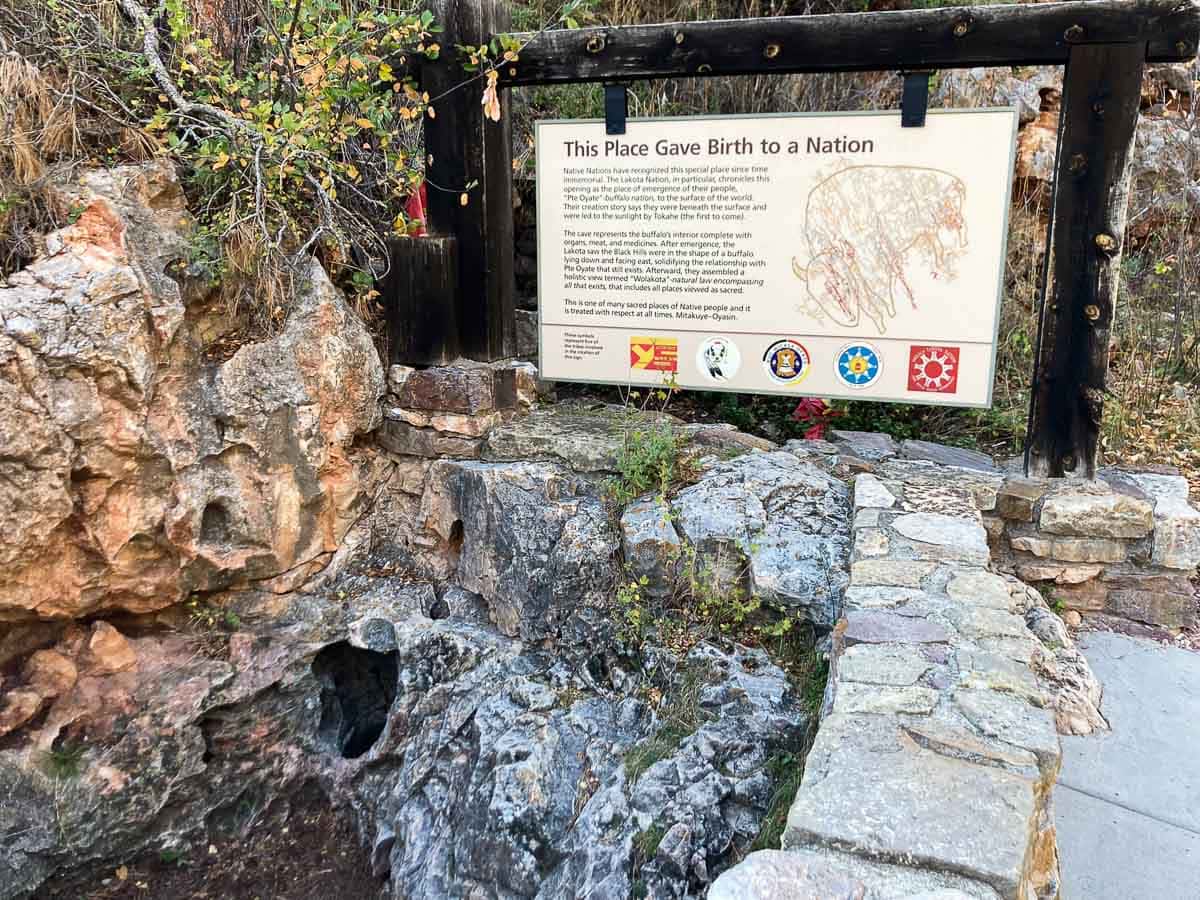
If you don’t take the Natural Entrance Tour, you can still see one of the cave’s natural entrances.
As long as Wind Cave is, it “has very few natural entrances,” the National Park Service says. “The largest and most well-known naturally formed entrance is only about ten inches wide. This is a very spiritual place to many different native people and is considered the birthplace of the Lakota nation.”
During business hours, when the Visitor Center is open, you can get there via a ramp and paved sidewalk from the Visitor Center. The walk between the Natural Entrance and Visitor Center is only approximately 225 yards one way.
Alternatively, there’s another short trail to the Natural Entrance, which is accessible all day long, including outside of Visitor Center hours. This 150-yard gravel trail starts at the picnic area.
FYI: Leashed pets are allowed on the short trail from the picnic area to the Natural Entrance. They are not allowed on the sidewalk between the Visitor Center and Natural Entrance, which requires entering the Visitor Center first.
If you’re lucky enough, you may feel the very gusts of wind that gave the cave its name. During times of large atmospheric pressure changes, it’s even possible to hear the winds of Wind Cave as they leave or enter the cave.
3. Enjoy Iconic Great Plains Scenery on the Prairie Vista Trail

It’s neither the longest nor the hardest hike in Wind Cave National Park, but the Prairie Vista Trail is certainly one of the nicest.
Starting at the Visitor Center or picnic area, this 1-mile trail loops through the park’s iconic mixed-grass prairie. It provides sweeping views of the prairie, as well as opportunities to see wildlife. Boards along the way offer information about the park.
This is a great little hike to do if you’re short on time when visiting Wind Cave National Park. The loop takes only about 30 minutes and is excellent for kids and pets.
FYI: The Prairie Vista Trail is one of the two trails in Wind Cave National Park where leashed pets are allowed.
4. Walk the Elk Mountain Trail

Another short but very enjoyable trail at Wind Cave is the Elk Mountain Trail. This fascinating trail loops around the Elk Mountain Campground, at the meeting point of prairie and forest.
The trail is only 1 mile long and doesn’t take longer than 30 minutes, but it’s a wonderful introduction to the diversity of Wind Cave National Park.
Additionally, as its name implies, this is a great area to listen to the bugling of bull elk in fall. Try to hike the Elk Mountain Trail at dawn or dusk for the best opportunities to hear the mating calls of these majestic mammals.
FYI: In addition to the Prairie Vista Trail, the Elk Mountain Trail is the second Wind Cave trail where pets are allowed, provided they’re on a leash no longer than 6 feet.
5. Hike the Rankin Ridge Trail
For a best-bang-for-your-buck hiking experience in Wind Cave National Park, arguably no trail is better than the Rankin Ridge Trail.
Although only about 1 mile long, this loop trail climbs to a high ridge that offers commanding views of the prairie and Black Hills. Rankin Ridge is the highest point in the national park and, on a clear day, it’s possible to see as far as the Badlands in the east.
Often, you can see various birds of prey here, including golden eagles, hawks and turkey vultures.
Located in the northwestern corner of the national park, the trailhead to Rankin Ridge is at the end of a spur road off of Highway 87 toward Custer State Park.
More recommended hikes in Wind Cave National Park:
- Cold Brook Canyon Trail (2.8 miles, out and back)
- Wind Cave Canyon Trail (3.6 miles, out and back)
- Lookout Point – Centennial Trail Loop (4.5 miles, loop)
- Boland Ridge Trail (5.2 miles, out and back)
- East Bison Flats Trail (7.4 miles, out and back)
You can find more information about hiking in Wind Cave National Park on the park’s website here.
6. See America’s National Mammal at Bison Flats
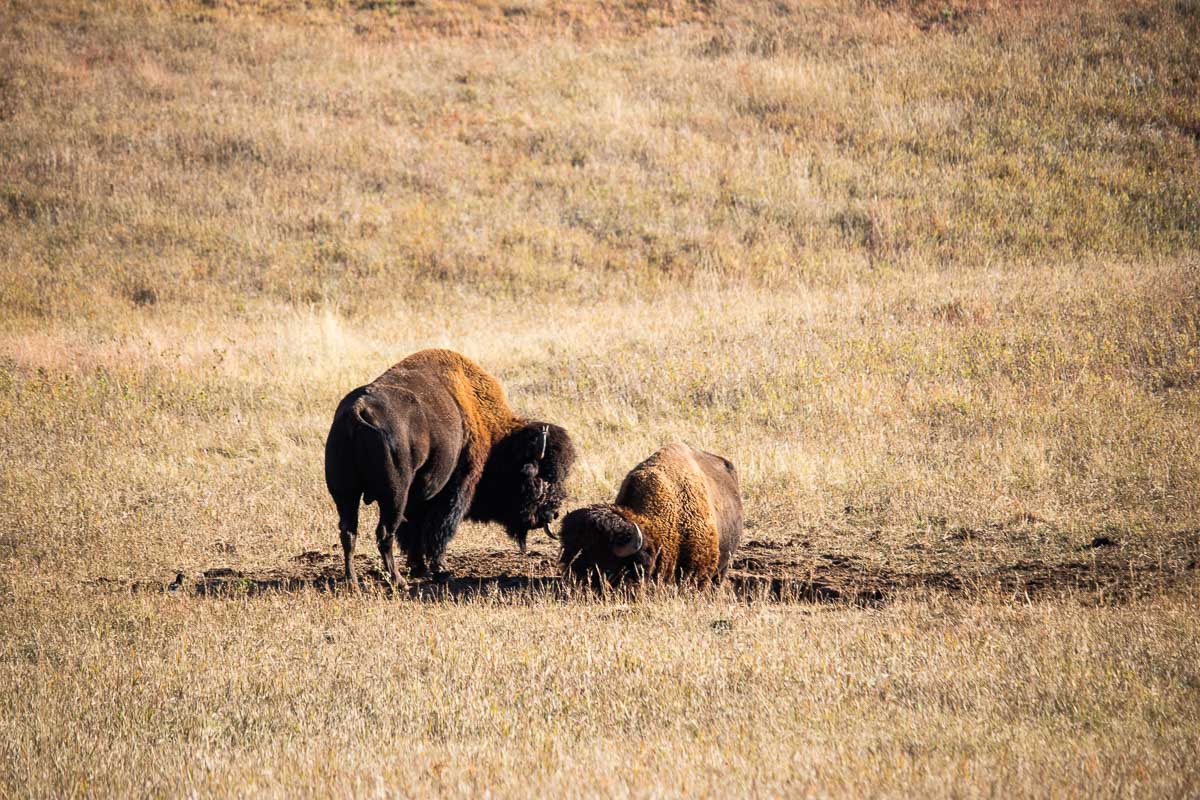
The road through Bison Flats is one of the most scenic drives in Wind Cave National Park.
Situated roughly between Gobbler Ridge and the Visitor Center area, this relatively level expanse of mixed-grass prairie is often frequented by Wind Cave National Park’s famous bison herds.
The iconic American bison came perilously close to extinction in the late-1800s—there were fewer than a thousand left in North America in 1900—but a devoted group of conservationists managed to save a few hundred animals.
After Wind Cave National Park was established in 1903, the American Bison Society transported fourteen animals—seven bulls and seven cows—from the New York Zoological Gardens, which is now the Bronx Zoo, to the national park in 1913.
In 1916, six additional bison were sent to Wind Cave from the large Yellowstone National Park herd. Those twenty original bison are the ancestors of the Wind Cave National Park bison herd today. That herd now consists of hundreds of individual animals.
Except for the rugged and remote backcountry areas, Bison Flats is the easiest place at Wind Cave to see bison, the official national mammal of the United States and one of the true symbols of the American West.
Read about the other U.S. national parks where you can see bison in the wild here.
7. Drive the Scenic NPS 5 and 6 Backcountry Roads
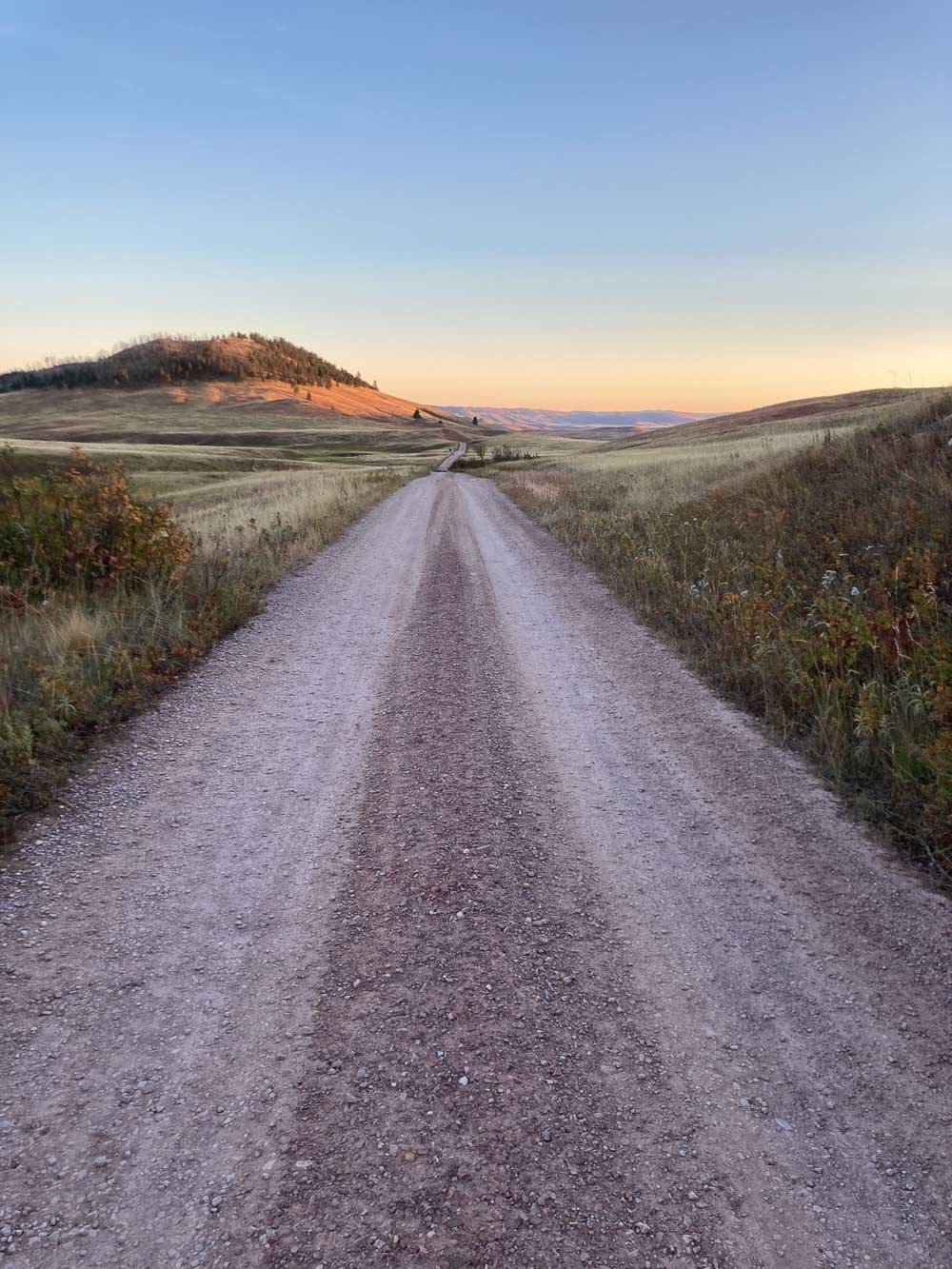
Slicing through the wild backcountry of eastern Wind Cave National Park, the NPS 5 and 6 gravel roads offer drivers a unique experience away from the crowds.
NPS 5 turns away from paved Highway 87 near the northwestern border of the park, while NPS 6 enters the park from Custer State Park in the northeast. Both roads converge in the scenic Red Valley, the remotest part of Wind Cave National Park accessible by vehicle.
Because this area is so far away from bustling traffic and the busy Visitor Center, it’s a superb place for wildlife watching.
Along NPS 6, herds of elk are often seen on the hills, particularly at Boland Ridge. NPS 5, on the other hand, is known for its bison sightings and prairie dog towns.
Note: These backcountry roads are narrower than regular paved roads. Gravel pullouts are available to park and enjoy the scenery, or to let other vehicles pass. Usually pretty well-maintained, they’re suitable for most passenger vehicles, but remember that there is no gas and poor cell service. Driving them after storms or in winter is not recommended.
8. Spot Some of Wind Cave National Park’s 100+ Bird Species
The permanent home of more than a hundred species of birds, Wind Cave National Park is a birder’s paradise. On top of those resident birds, numerous others migrate through the park in spring and fall.
Cave tours and hiking may be the two most popular things to do in Wind Cave National Park, but bird watching is definitely one of the most underrated.
Set at the meeting point of Great Plains prairie and the Black Hills forests, the park is a refuge for an incredible diversity of birds.
From burrowing owls, cliff swallows, red-headed woodpeckers and Western meadowlarks to birds of prey like turkey vultures, great horned owls, red-tailed hawks and golden eagles, the checklist of birds at Wind Cave is exceptionally long.
Some of the best places in Wind Cave National Park for bird watching are the Elk Mountain Campground, the Prairie Vista Trail and general Visitor Center area, Rankin Ridge and, especially, the limestone walls of Wind Cave Canyon.
9. Listen to the Bugling of Bull Elk

In fall, from mid-September through October, the somewhat-eerie sound of bull elk bugles can be heard at twilight in certain areas in Wind Cave National Park.
Bugling occurs during the elk rut, the mating season of these large members of the deer family. This is when bulls compete for cows, fighting each other with their massive antlers and expressing themselves through loud bugles.
“This bugle heralds fall in the western United States and can be heard from dusk to dawn in the park each year,” the National Park Service says.
The elk are most active just before sunrise and just after sunset, which are the best times to listen for bugling bull elk at Wind Cave.
There are a couple of locations where opportunities to hear this iconic wilderness sound are best.
The easiest is at the appropriately named Elk Mountain Campground and the surrounding Elk Mountain Trail.
Although elk usually don’t venture into the campground itself, they do roam the nearby slopes to the west and the south, and can often be heard in the distance.
The second excellent place to see elk and listen to the bulls’ bugling is Boland Ridge in the far eastern part of the park. Located on the NPS 6 backcountry road, this remote area is home to herds of both elk and bison.
Additionally, you may also be able to hear elk bugling from roadside parking areas on Highway 87 or Highway 385. Stop at spots like the Beaver Creek pullout, Wind Cave Canyon Trailhead, Cold Brook Canyon and/or Bison Flats to listen.
10. Observe Prairie Dogs in Their “Towns”
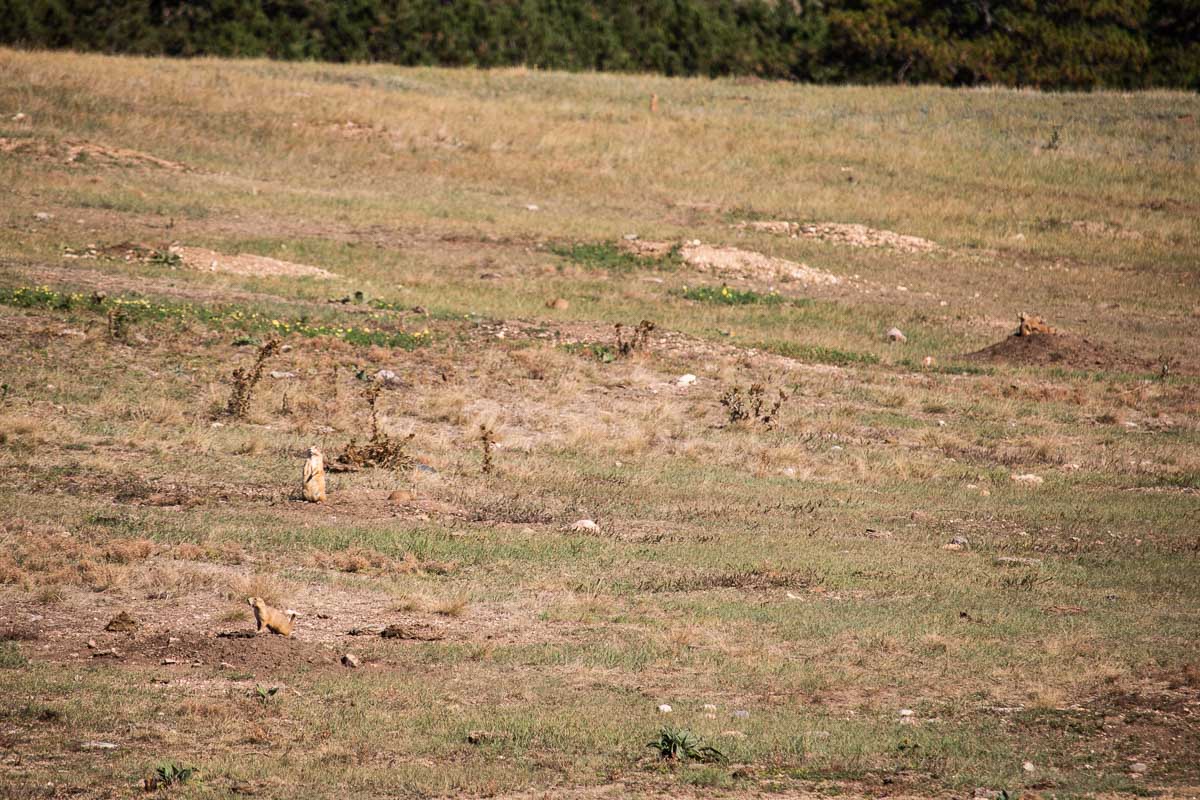
The counterpart of the massive bison that roam the prairie, prairie dogs are small rodents that are part of the squirrel family. Both animals are true icons of the Great Plains.
And they may be rather small, but black-tailed prairie dogs are among the most visible animals in Wind Cave National Park.
You can find them in their so-called “towns” or colonies, sprawling collections of interconnected burrows, sleeping quarters and even toilets. Some prairie dog towns are so large, up to several hundred acres, that they consist of different “neighborhoods,” also known as “coteries.”
These popular park inhabitants are a lot of fun to watch for a while, as they pop in and out of their burrows, run across the meadows, and talk to each other through various calls.
Numerous prairie dog towns dot the prairie of Wind Cave National Park, some of which can be seen along backcountry hiking trails and the western part of NPS 5.
Watching the iconic prairie dogs go about their daily business is without a doubt one of the top things to do in Wind Cave National Park.
Other animals in Wind Cave National Park are also attracted to prairie dog towns, whether it’s for easy housing opportunities or a meal. Watch for black-footed ferrets, coyotes, burrowing owls, hawks and rattlesnakes.
Fun fact: Early French explorers called these industrious rodents “petit chien”, or “little dog” in English. They got their name because of their call, which resembles a canine bark, not because of their physical resemblance to dogs.
11. Camp at the Elk Mountain Campground

There are very few facilities and services within Wind Cave National Park. No gas, no restaurants, no groceries and no lodging. There is, however, a fun campground where you can spend the night.
The Elk Mountain Campground, located just northwest of the Visitor Center, is open year-round.
Its 62 campsites can be reserved in advance on Recreation.gov. Sites that aren’t reserved are assigned on a first-come first-served basis on the day of camping. According to the National Park Service, the Elk Mountain Campground usually doesn’t fill up.
Flush toilets and drinking water are available from late-spring through early-fall. In the down season, there are vault toilets, but no water. Campsites have a designated fire ring and picnic table.
Situated at the edge of a ponderosa pine forest and the open prairie, the Elk Mountain Campground is a great place to immerse yourself in the park’s diverse flora. Fauna is also often seen—or heard—here, including the bugling of bull elk in the fall.
The Elk Mountain Trail, which starts at the amphitheater, is a wonderful place to enjoy the scenery and see a variety of native birds.
Visiting Wind Cave National Park FAQs
Do I Have to Pay a Fee to Enter Wind Cave National Park?
No, Wind Cave National Park does not charge an entrance fee to drive through the park, visit viewpoints and hike the trails.
The only fees are for ranger-guided cave tours (ranging from $14 to $45 per person) and to camp at the Elk Mountain Campground ($24 per site per night in the high season, $12 per site per night in the low season).
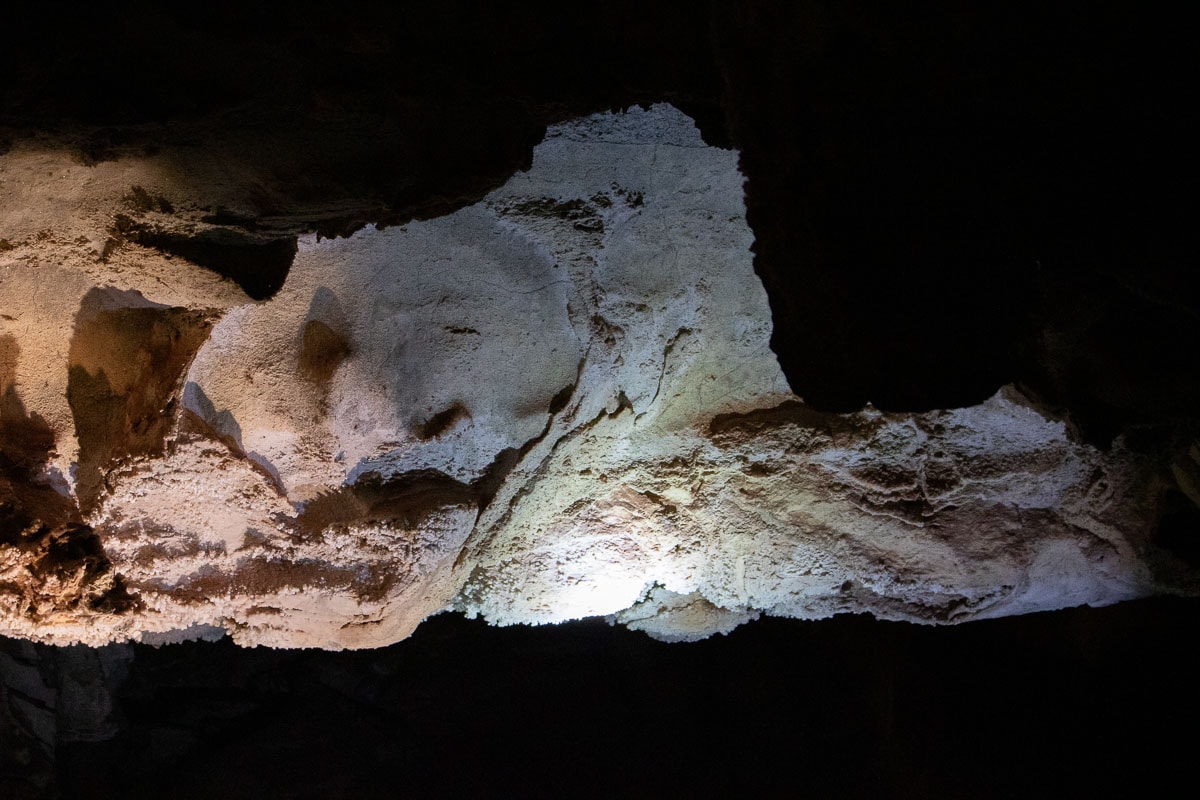
How Much Time Do I Need to Experience Wind Cave National Park?
You could easily get a glimpse and taste of the diversity of Wind Cave National Park in a day. Go on a cave tour, do a short hike, drive Highways 87 and 385, and that’s a pretty great day.
However, to fully experience everything the park has to offer, you should dedicate at least two days to Wind Cave National Park.
Camp at the Elk Mountain Campground, get a cabin in neighboring Custer State Park, or book a room in nearby Custer or Hot Springs.
In two days, you’ll have the amazing opportunity to enjoy Wind Cave in the evening and/or morning. These are the best times to watch the park’s wildlife, while the “golden hour” is a truly magical time on the prairie.
It would also allow you to enjoy some more hiking and drive the scenic NPS 5 and 6 backcountry roads.
To do all the things in Wind Cave National Park mentioned above in a comfortable and unrushed way, you’d need to spend two days and one night in the area.
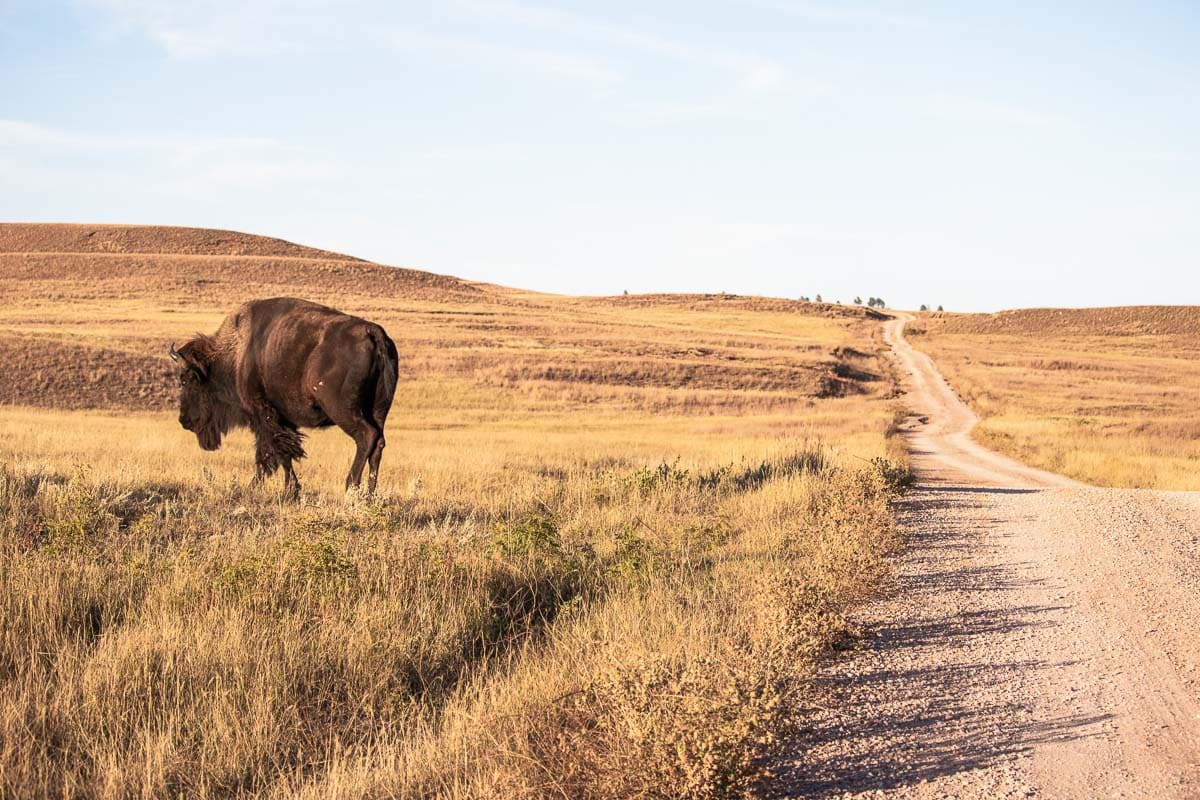
What Is the Best Time to Visit Wind Cave National Park?
Wind Cave National Park is open throughout the year, but for the most enjoyable experience, the fall season is probably the best time for a visit. Although each season has something going for it, fall typically has the nicest weather and best wildlife viewing opportunities.
Winter
Winter in the southern Black Hills is slightly warmer than in the northern Black Hills, sheltered somewhat from the frigid air blowing south from Canada.
Snowfall is possible from December through March, while the daily high temperatures range between the high-30s and low-40s.
Spring
Spring brings rising temperatures, but also more rain. May, June and July are the wettest months in Wind Cave National Park.
A typical spring day is unpredictable and can come with a variety of weather, from sunny spells to sudden rain showers and gusts of wind.
Summer
Summer is by far the warmest season at Wind Cave. From June through August, the daily high temperatures are well in the 80s, a very comfortable time of year for scenic drives and short hikes.
That said, though, severe thunderstorms are also possible in June and July. These storms are capable of producing severe lightning in the Black Hills, as well as large hailstones. Flash floods are possible throughout the summer.
Fall
This brings us to fall, which starts in September and runs through mid-November. Fall is the driest season in Wind Cave National Park, with only about 1 inch of precipitation in October. Temperatures are most enjoyable in September and October, ranging from the mid-70s to mid-60s.
Fall offers comfy daytime temperatures, crisp nights and beautiful fall foliage in the forests. Additionally, this is also when the elk rut takes place, complete with the iconic bugling of the bull elk.
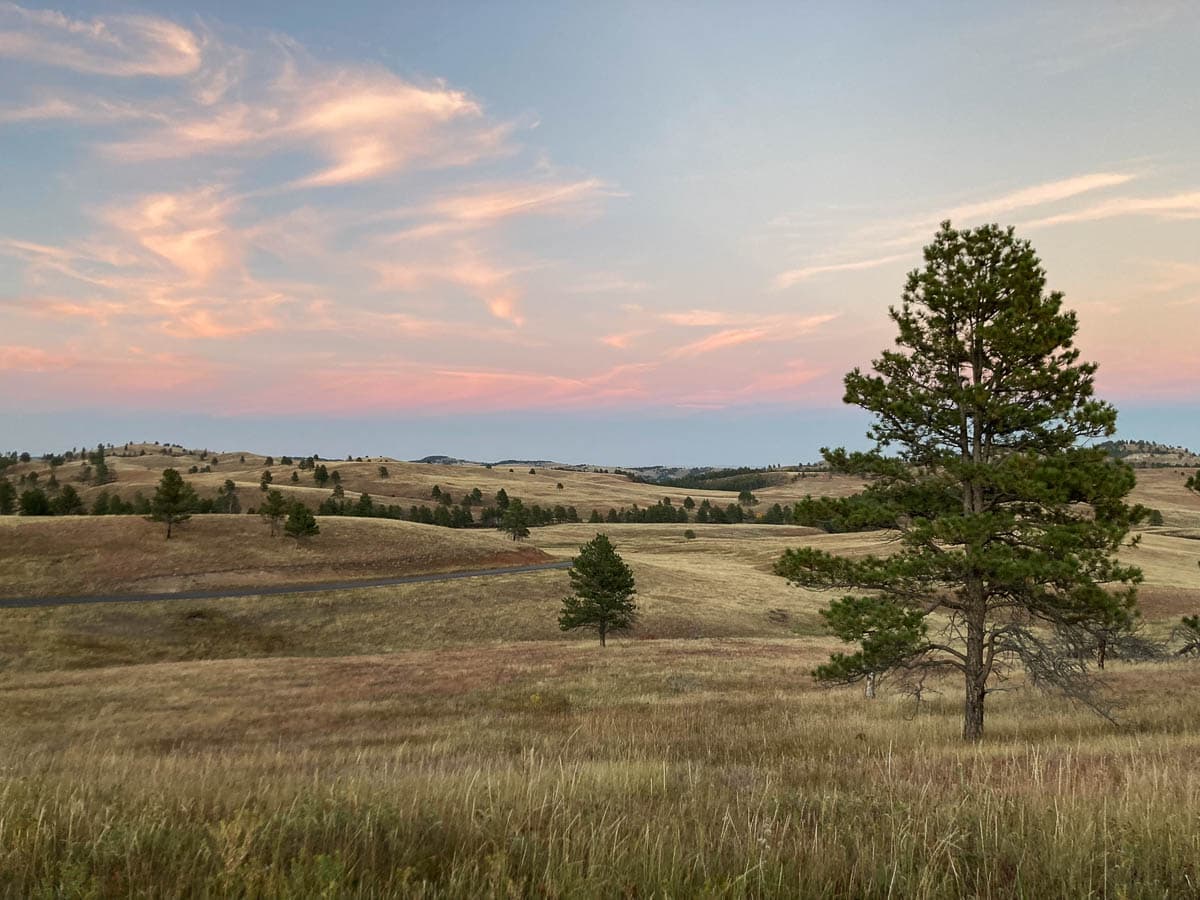
What Can I Do With My Dog in Wind Cave National Park?
Wind Cave National Park is one of the few national parks where you can hike with your dog. However, dogs are only allowed on two trails: the Prairie Vista Trail and Elk Mountain Trail.
You can also explore the Elk Mountain Campground and the grassy areas around the Visitor Center with your four-legged friends. Additionally, dogs are allowed on established roads and in parking areas, both paved and unpaved.
Dogs must be on a leash that’s no longer than 6 feet at all times. You may not leave your dog in your car. Dogs are not allowed in public buildings, on ranger programs, on cave tours or in the backcountry.
You can find more information about pets in Wind Cave National Park here.

Where Can I Stay Near Wind Cave National Park?
Besides the Elk Mountain Campground, there are no lodging options within Wind Cave National Park. You’ll find the widest range of options in three nearby areas:
- Town of Hot Springs (15 minutes south)
- Town of Custer (20 minutes northwest)
- Custer State Park (35 minutes north)
The nearest major city to Wind Cave National Park and the main gateway to the area’s numerous parks is Rapid City, about an hour to the north.
Which Animals Can I See in Wind Cave National Park?
A wide range of wildlife calls Wind Cave National Park home. Situated where the prairie meets the forest, the park’s diverse habitats harbor an abundance of animals.
Mammals
You’re almost certain to see prairie dogs during your visit, while other iconic prairie mammals like bison, pronghorn and mule deer are common sights as well. You’ll find these large animals in open grasslands like Bison Flats, on ridges and along backcountry roads.
With some more patience, you might see or hear elk and coyotes, especially at dawn and dusk.
Also present in the park, although less frequently seen, are black-footed ferrets, which live in or near prairie dog towns.
Remember that all animals in Wind Cave National Park are wild and should never be approached. This goes for the smallest mammals like prairie dogs, which can carry diseases like the plague (yes, really!), to the largest, such as elk and bison, which may charge when provoked or irritated.
Learn about elk safety here.
Learn about bison safety here.
Park rules say that you should stay at least 25 yards away from wildlife. If animals are close to the road, stay in your vehicle.

Birds
As far as birds go, there are more than a hundred species in the park, along with many others that pass through seasonally. Look for the fascinating burrowing owls in prairie dog towns, while elsewhere on the prairie, you might see wild turkeys, western meadowlarks, grouse and bluebirds.
Up in the sky, watch for golden eagles, hawks, magpies and turkey vultures. In the forest, keep your eyes peeled for great horned owls, woodpeckers, western tanagers and cedar waxwings.
Reptiles
Although a couple of turtle species have been seen in the park, the lack of water makes them uncommon. Almost all reptiles in Wind Cave National Park are snakes, which thrive on the sun-soaked prairie.
Snakes are particularly visible in summer when the higher temperatures make them most active. Garter snakes, milk snakes and bullsnakes are common around the Visitor Center.
The only venomous snake in Wind Cave National Park is the prairie rattlesnake. They are quite common in this region, most often seen in and around prairie dog towns and in rocky places. Generally speaking, unless they’re feeling trapped, prairie rattlesnakes are not aggressive and will avoid encounters.
Learn what to do when you encounter a rattlesnake here.
Popular Activities and Attractions Near Wind Cave National Park
Located in the Black Hills of South Dakota, Wind Cave National Park is close to a plethora of other amazing destinations and attractions.
Other popular parks and sites in the Black Hills are:
- Custer State Park
- Jewel Cave National Monument
- Mount Rushmore National Memorial
- Crazy Horse Memorial
- Mammoth Site
Elsewhere in southwestern South Dakota, there are two other awesome National Park Service sites, approximately two hours to the northeast from Wind Cave:
- Badlands National Park
- Minuteman Missile National Historic Site
Across the border in Wyoming, you’ll find the very first national monument ever designated by a U.S. President, a popular day trip destination from the Black Hills area:
- Devils Tower National Monument

